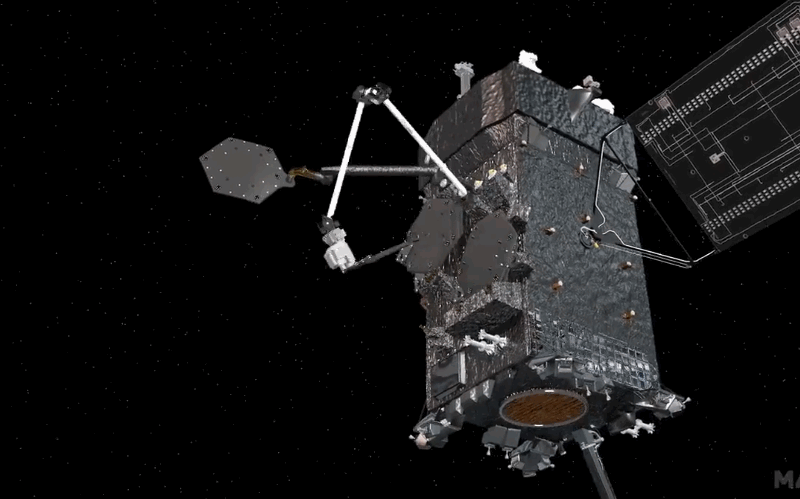NASA [1] has awarded Maxar[2] an estimated $142 million contract to demonstrate in-orbit spacecraft refueling and assembly of new components using a custom robotic platform in space.
The space infrastructure dexterous robot, or SPIDER, program will be part of NASA’s Restore-L mission to demonstrate automation of proposed orbital tasks like reconfiguring or repairing a satellite or manufacturing new components from scratch.
The first thing the Restore-L spacecraft will do is show that it can synchronize with, capture, connect with and refuel a satellite in orbit, then release it into a new orbit. Afterwards the craft will use the Maxar-built robotic arm to assemble a multi-panel antenna reflector, then test it.

Last, a separate piece of hardware, Tethers Unlimited’s MakerSat, will extrude a beam some 10-20 meters long, which will be inspected by the parent satellite, then detached and reattached to demonstrate its robustness.
“We are continuing America’s global leadership in space technology by proving we can assemble spacecraft with larger and more powerful components, after launch,” said NASA’s Jim Reuter in a news post[3]. “This technology demonstration will open up a new world of in-space robotic capabilities.”
There’s no hard timeline for the mission yet, but it’s intended to take off the mid 2020s. This isn’t a small-scale experiment that can fly up next week in an Electron — it’s a big, expensive one that will likely take up most of a large rocket’s payload.
Although it’s only a demonstration, a Maxar representative pointed out that it is very close to what would be an operational system on other satellites in the future. It has also been previously demoed on the ground, though of course that’s no substitute for the real thing.
...